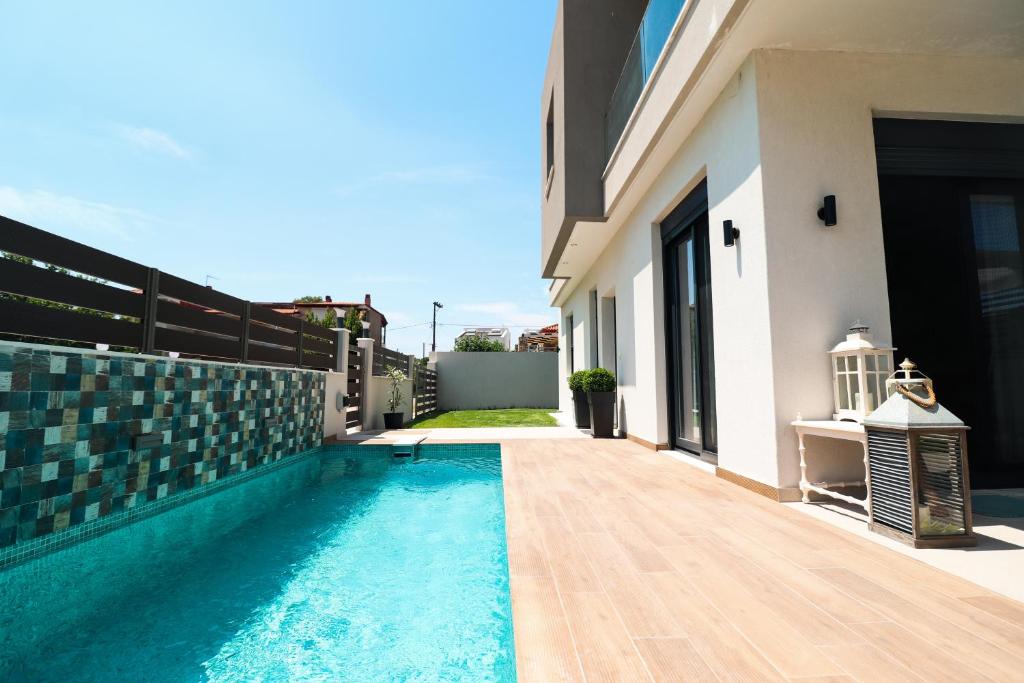A green pool is every pool owner’s nightmare. When algae takes over, it’s essential to know how to shock a pool that is green. Regular maintenance is crucial, but understanding how to handle such situations can save time and resources. This guide will navigate you through the steps to transform a murky green pool into a clear, healthy oasis.

Understanding the Problem
Why Does a Pool Turn Green?
A pool can turn green due to the growth of algae, often spurred by imbalanced chemicals and insufficient chlorination. Warm weather and inadequate circulation can exacerbate this issue. It’s vital to assess these conditions to prevent future occurrences.
Identifying Algae Type
Understanding the type of algae is crucial. Green algae is most common, but black, mustard, or pink algae may also be present in pools, each requiring specific treatments.
Preparation for Shocking
Gathering Necessary Supplies
Before shocking your pool, collect necessary supplies: chlorine shock, protective gear, a pool brush, and testing kits. Ensuring you have these materials ready makes the process smoother and more efficient.
Testing the Water
Use a pool testing kit to gauge pH and chlorine levels. Optimal pH levels should fall between 7.2 and 7.6 for chlorine to work effectively. Adjust these levels as needed before proceeding to shock the pool.
Executing the Shock Process
Choosing the Right Pool Shock
Select a calcium hypochlorite shock for effective results. This type of shock effectively kills algae and clarifies your pool water. Some alternatives include sodium hypochlorite and lithium hypochlorite, depending on availability and pool specifics.
Properly Applying Shock
Read instructions carefully regarding the amount needed per gallon of pool water. Broadcast the shock evenly across the surface in the early evening to avoid the chlorine being burned off by the sun.
Post-Shock Maintenance
Running the Pool Filter
Allow the filter to run overnight post-shock. This ensures filtered water circulation, which aids in the removal of dead algae and restores clarity.
Brushing and Re-Test
Brush the walls and floor of the pool to remove dead algae. Once complete, retest the water. Adjustments may be necessary for chlorine or pH levels.
Preventing Future Green Pools
Regular Maintenance Schedule
Implement a consistent pool maintenance routine, including regular shocking, to maintain water clarity. Frequent pH and chlorine testing can preemptively address imbalances.
Utilizing Technology
New technology aids in maintaining pool health. Consider installing a digital monitoring system for real-time updates on pool chemistry.

FAQs
What causes algae growth after shocking the pool?
Improper chemical balance and inadequate filtration can cause algae to return post-shock. Regular maintenance and monitoring prevent recurrence.
How often should I shock my pool?
Ideally, shock your pool once a week or as needed, particularly after heavy use, storms, or heatwaves, which may disrupt chemical balance.
Can I swim in a pool immediately after shocking?
It’s advisable to wait until chlorine levels return to a safe rangegenerally 24 hours post-treatment. Always retest water before swimming.
For more insights on effective pool maintenance, visit BHG.
This article contains affiliate links. We may earn a commission at no extra cost to you.

